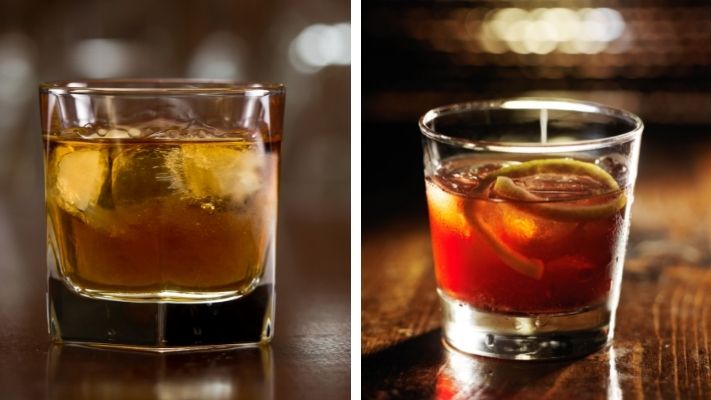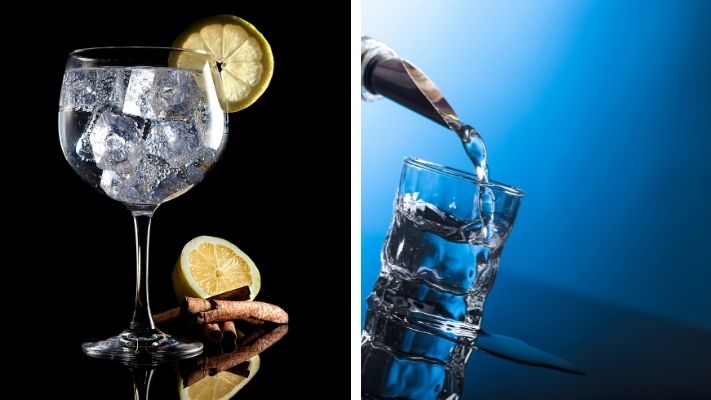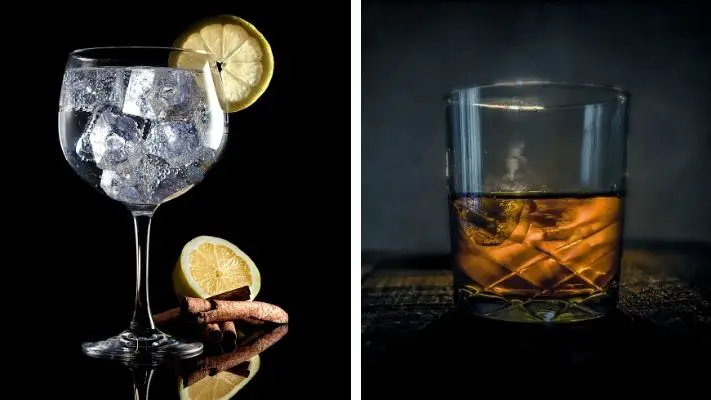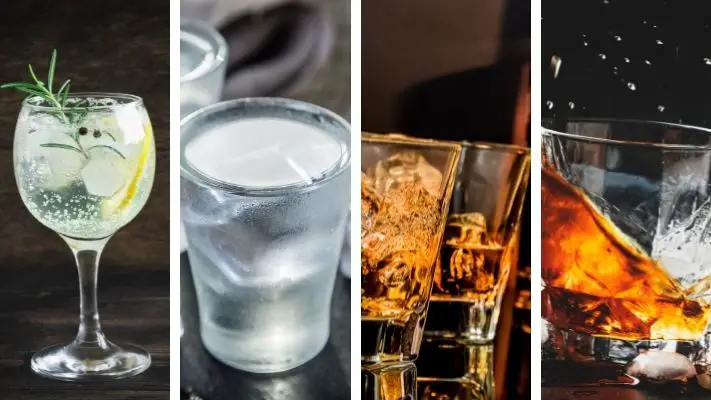There are many types of liquor in the world, but some are more popular than others. Gin, vodka, whiskey, and rum are all common choices for alcohol, but they each have unique properties that set them apart from one another.
In this article, we will explore the major differences between these four liquors. We will start by discussing the differences between gin and vodka. Then, we will move on to whiskey and rum.
Finally, we will explore whether or not it is true that you get drunk quicker from whiskey than other drinks. We will also discuss whether or not wine can be consumed straight or if it always has to be mixed with something else first.
What is the difference between gin vodka whiskey and rum?
The differences between gin vodka whiskey and rum include the ingredients used to make them, their basic flavors, and what they are typically mixed with.
Most people know that vodka is made from distilled potatoes or grain, but many are surprised to learn that gin is also a flavored liquor that does not require fermentation.
Most gins are made up of botanicals like coriander seeds, orange peels, etc., which are then distilled in alcohol.
The flavor profile is different for each brand of gin because there are so many different types of botanicals. Vodka has no taste on its own since it has been distilled at very high temperatures to remove any impurities. However, it does have a slightly sweet aftertaste.
Other differences between vodka and gin are that vodka is clear in color while gin has a yellowish tinge; they do not have the same flavor profile at all, but vodka can be used with almost any mixer to make it into a drink; and since vodka does not have one specific flavor, you can infuse it with different fruits, vegetables, spices, etc., to give it your unique taste.
Difference between whiskey and rum.

Whiskey and rum are both made in very similar ways, but that is where the similarities end.
First, you start with sugar cane stalks or molasses, which are fermented before being distilled. Then, they are aged for at least one year either inside wooden barrels or in an underground pit (to mimic aging in a barrel).
Most rums are not aged any longer than this because flavorings like vanilla extract may be added to give it color and taste rather than age. However, if you want to make quality whiskey, it must be aged at least 4 years; some brands go up into their 30’s or 40’s (or even’s of years) for top-quality whiskies.
Additionally, while some whiskey is made with only one type of grain (e.g., rye), most are created using two or three types of grains. By law, all American whiskeys must be made up of at least 51% corn; the remaining ingredients vary between a rye, barley, wheat, etc.
Most ryes use malted barley for flavoring while most bourbons use corn and rye in their mash. Rum is typically made from either molasses or sugar cane juice that has been fermented into a liquor that can then be distilled.
Whiskey varies greatly by its alcohol content, sweetness level, flavor profile, color, texture/mouthfeel/body, grain mixture used in production, what it’s typically mixed with, country of origin (e.g., Scotland, Canada, America), barrel aging process used, and type of barrel (e.g., hickory, oak, etc.).
Difference between bourbon whiskey and rye

Bourbon whiskey must be made up of at least 51% corn; most are typically 55-65% corn; also known as “Kentucky Whiskey” because 95% of all Kentucky distilleries produce it; requires extra steps to carbonate (charcoal filtering); very sweet tasting especially with soft red winter wheat added in the grain mixture; named after Bourbon County in Kentucky where it was first produced by a Baptist minister in 1789 using limestone-filtered water from the Paris Spring.
Rye whiskey must be made up of at least 51% rye; many brands use malted barley in their grain mixture; flavor profile is slightly spicier than bourbon with hints of fruitiness, vanilla, and toffee; other grains include corn, wheat, and barley depending on the brand; named after the historical province of “Ryegate” in Eastern England where it was first produced by British soldiers during the 1660s.
Other major differences between bourbon and rye are that while whiskeys typically age for 1-2 years before being bottled, bourbons are aged 2-5 years while ryes usually go 3-6 years before they’re ready to drink (e.g., you would not want to drink 6-year rye); bourbons are aged in used barrels while ryes are aged in new barrels, and the vast majority of whiskies made today (both bourbon and rye) are distilled in column stills (which allow for greater control over the distillation process through fractional distillation).
Whiskey varies greatly by its alcohol content, sweetness level, grain mixture used in production, what it’s typically mixed with, country of origin (e.g., Scotland, Canada), barrel aging process used, and type of barrel (e.g., hickory, oak).
Differences Between Gin and Vodka

Gin is made by infusing juniper berries (a type of pine cone) into grain alcohol or vodka that has been distilled at least three times; distillation allows the ethanol to extract the scent/flavor from the berries; it typically contains 37.5% ABV.
Vodka is made by fermenting and then distilling either potatoes, molasses, rye, rice, wheat, or corn at least two times; there are several different types of stills used today to create specific flavor profiles which can include garlic and even milk proteins; it contains 40% ABV.
Differences Between Gin and Whiskey

Gin is a liquor that must be made up of at least 70% juniper berries and other botanicals for it to have the title of “gin” on its label. The second-largest percentage can consist of other spices, citrus, or flowers, but it’s typically the juniper berry flavor that dominates gin.
In contrast, whiskey is any liquor that has been distilled from fermented grain mash (which may contain both malted and unmalted barley along with other grains such as corn or rye).
It doesn’t necessarily have to taste like anything because you can age it in oak barrels for many years before taking it out and coloring/flavoring it if necessary; this process gives whiskeys their rich amber color and smooth taste.
Differences Between Gin and Rum

Gin derives its flavor from juniper berries, coriander, angelica root, orris root, licorice, cinnamon among other things.
Rum derives its flavor from the molasses that’s leftover after the sugar has been extracted during the process of refining sugar cane juice into granulated crystals or syrup; this molasses is then typically mixed with water and fermented before being distilled at least once to produce what’s known as “white rum” which tends to be lighter in both taste and color than dark rums.
Is it true that you get drunk quicker from whiskey than other drinks?
There’s some debate on the topic, but it may be true. Whiskey is typically 40% ABV whereas other types of liquor are usually between 20-30% ABV.
That being said, you would have to drink much more whiskey in one sitting than vodka or rum because it’s so highly concentrated and because its alcohol content burns off at a lower temperature during evaporation.
Can you drink straight or do you always have to mix it with something else first?
You can drink straight, but many people choose to mix it with something else because it has a very strong taste. You may add other types of liquor to the mixture or you could add juice, soda water, tonic water, ginger ale, cola among other things depending upon your personal preference.

